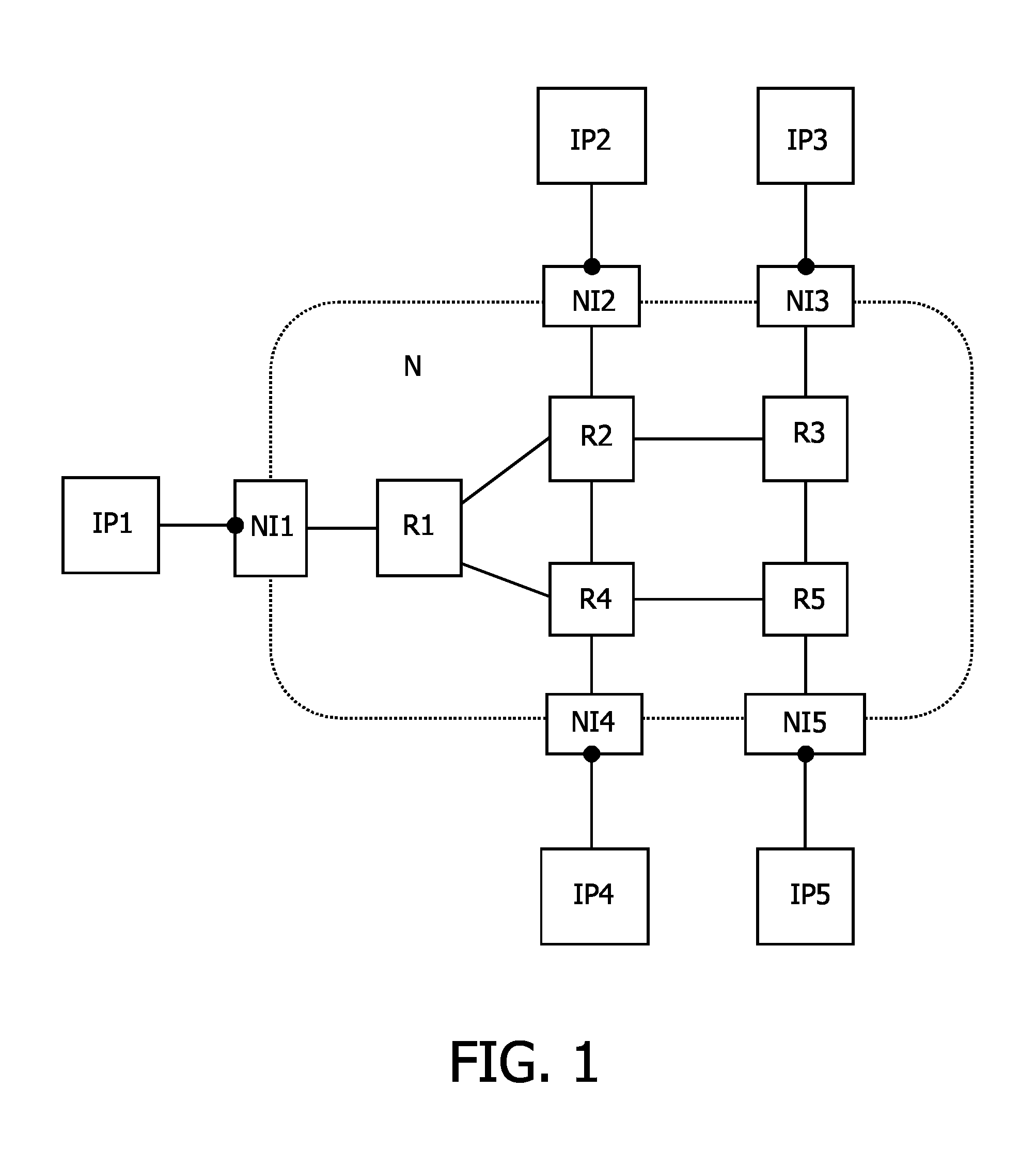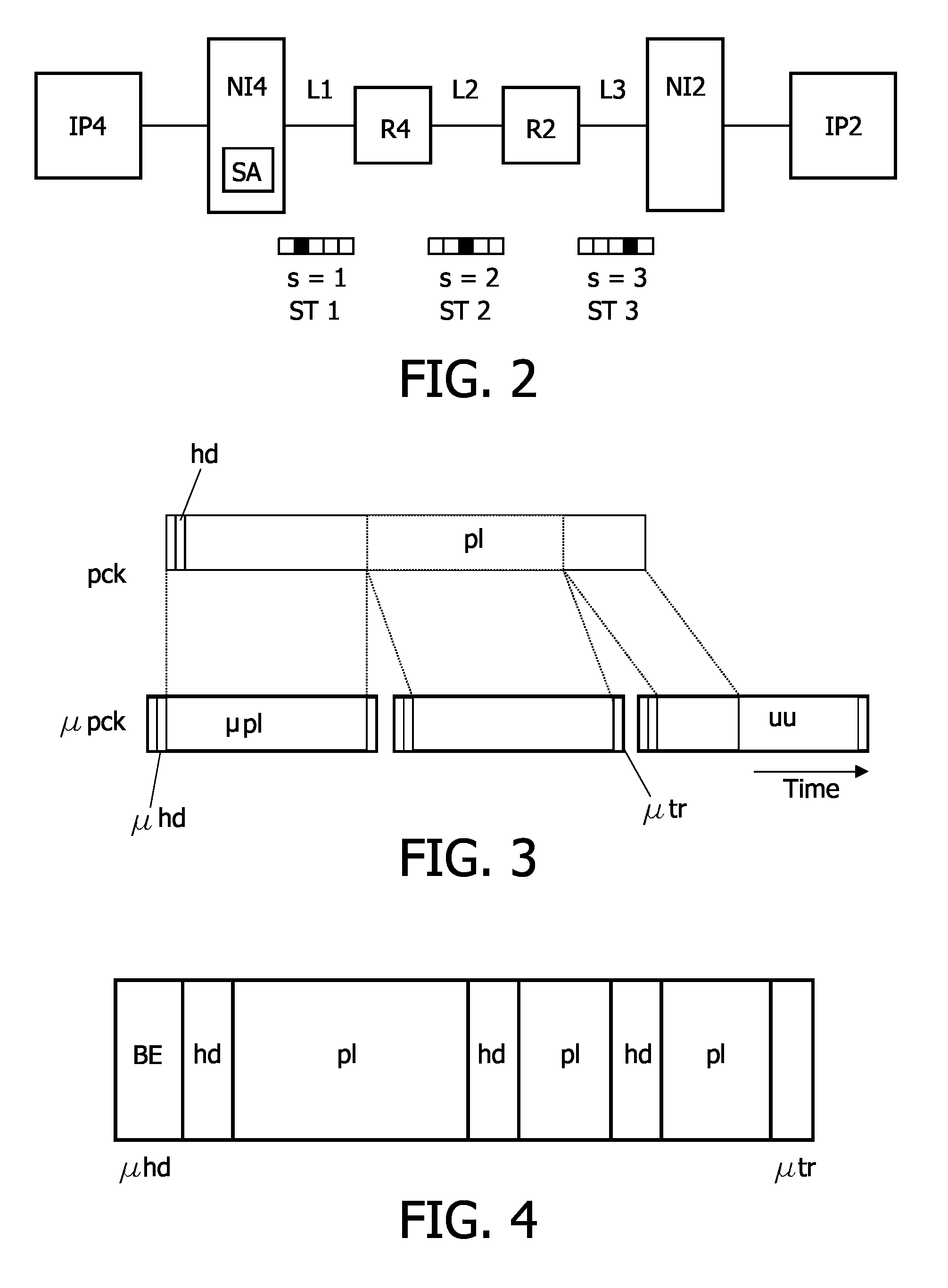Electronic device and method of communication resource allocation
a technology of electronic devices and communication resources, applied in the field of electronic devices and mobile devices, can solve the problems of increasing the complexity of current mobile systems, such as a mobile phone or a pda, and increasing the number of links too costly, and achieve the effect of improving the allocation of communication resources
- Summary
- Abstract
- Description
- Claims
- Application Information
AI Technical Summary
Benefits of technology
Problems solved by technology
Method used
Image
Examples
Embodiment Construction
[0039]The first embodiment relates to multi-module electronic systems, i.e. a plurality of modules on the same die, multiple dies (e.g. system in a package), or on multiple chips, which communicate with each other via some kind of interconnect. The interconnect can be embodied as a network. The network may include wires, bus, time-division multiplexing, switch, and / or routers within a network. At the transport layer of said network, the communication between the modules is performed over connections. A connection is considered as a set of channels, each having a set of connection properties, between a first module and at least one second module. For a connection between a first module and a single second module, the connection may comprise two channels, namely one from the first module to the second module, i.e. the request channel, and a second channel from the second to the first module, i.e. the response channel. Therefore, a connection or the path of the connection through the n...
PUM
 Login to View More
Login to View More Abstract
Description
Claims
Application Information
 Login to View More
Login to View More - R&D
- Intellectual Property
- Life Sciences
- Materials
- Tech Scout
- Unparalleled Data Quality
- Higher Quality Content
- 60% Fewer Hallucinations
Browse by: Latest US Patents, China's latest patents, Technical Efficacy Thesaurus, Application Domain, Technology Topic, Popular Technical Reports.
© 2025 PatSnap. All rights reserved.Legal|Privacy policy|Modern Slavery Act Transparency Statement|Sitemap|About US| Contact US: help@patsnap.com



